A trip through Columbus Ohio is never complete for my husband and me until we stop in and visit the charming town of German Village. It a historic neighborhood, situated just south of the city’s downtown. As the name suggests, it was settled by a large number of German immigrants in the early-to-mid-19th century. At one time these immigrants totaled close to a third of the city’s entire population.
I am now well into a series of house portraits depicting some of my favorite homes in the area, as part of a series of 50 paintings of homes and historic buildings I have now created within the greater Columbus area.
The city of Columbus has a fascinating history, but in this article I am concentrating on the earliest residential area in the city.
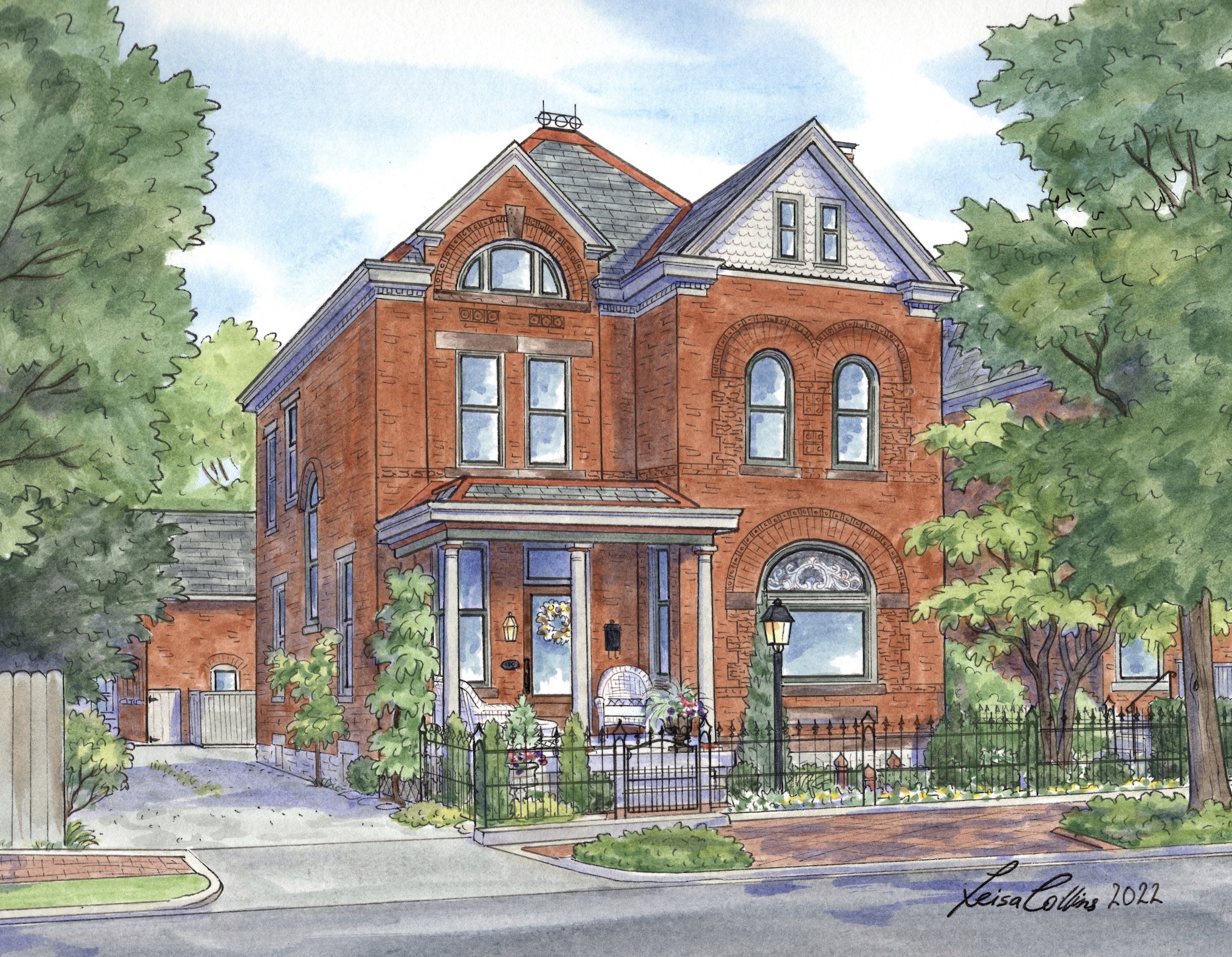
Not only do we love the coffee houses and restaurants in German Village but they have some very unique stores as well. Our favorite is the The Book Loft of German Village, a pre-Civil War-era style bookstore which has 32 separate rooms!
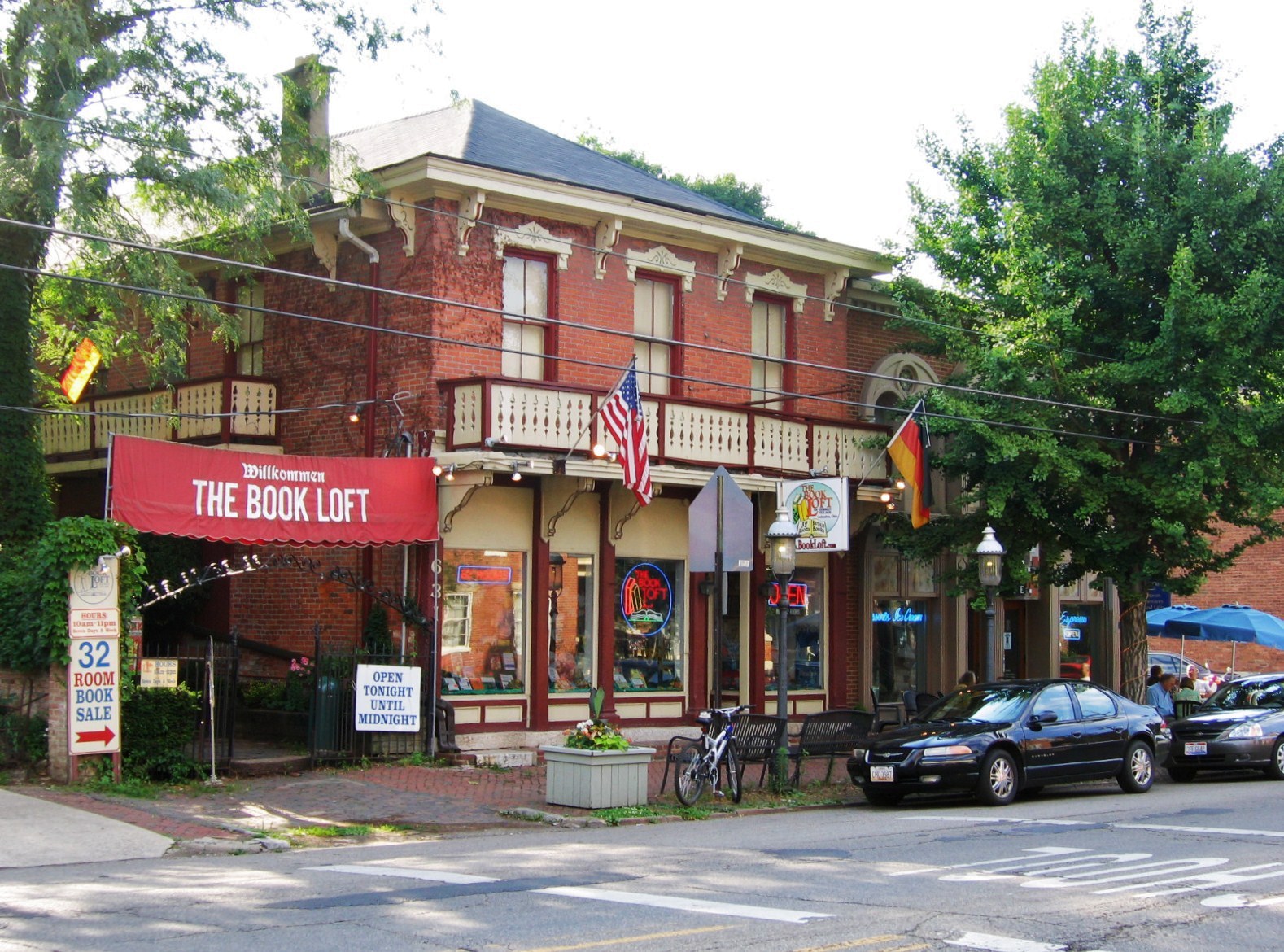
Then there is the world’s largest producers of stained glass, the Franklin Art Glass Studios as well as many wonderful art galleries.
A few years ago, the American Planning Association name German Village as one of America’s Great Places in the Neighborhoods category. Their description reads, “Unpretentious, renovated houses and cottages stand shoulder to shoulder. Small, meticulously maintained front yards front tree-lined streets with brick sidewalks and cultivated village planters. Small businesses and storefronts with eye-catching displays and the aroma of culinary delights draw in passing pedestrians. German Village has remained true to its mid-19th century history, architecture, and character despite periods of disinvestment, decline, and near ruin.”
The first in my German Village House Portrait series
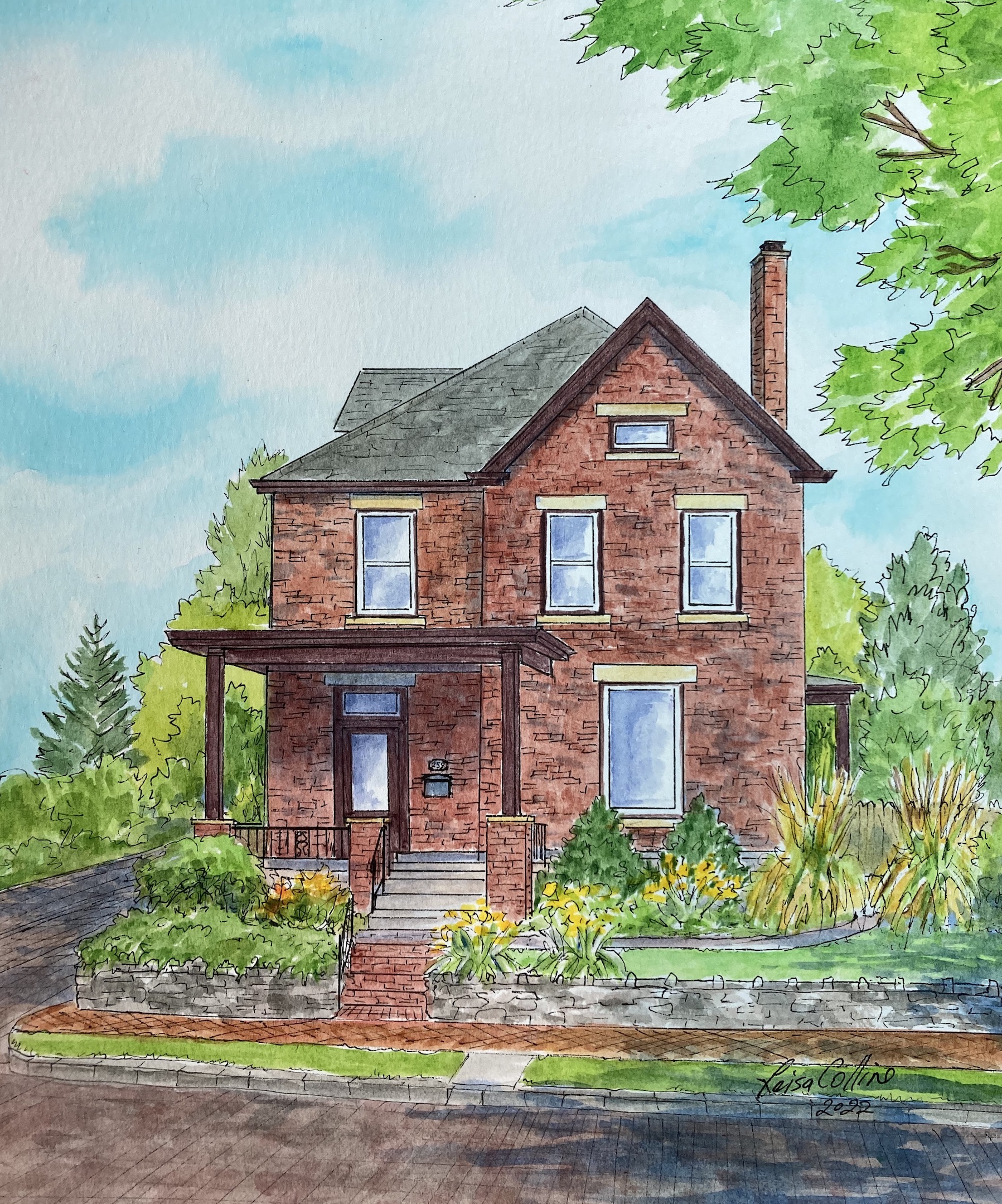



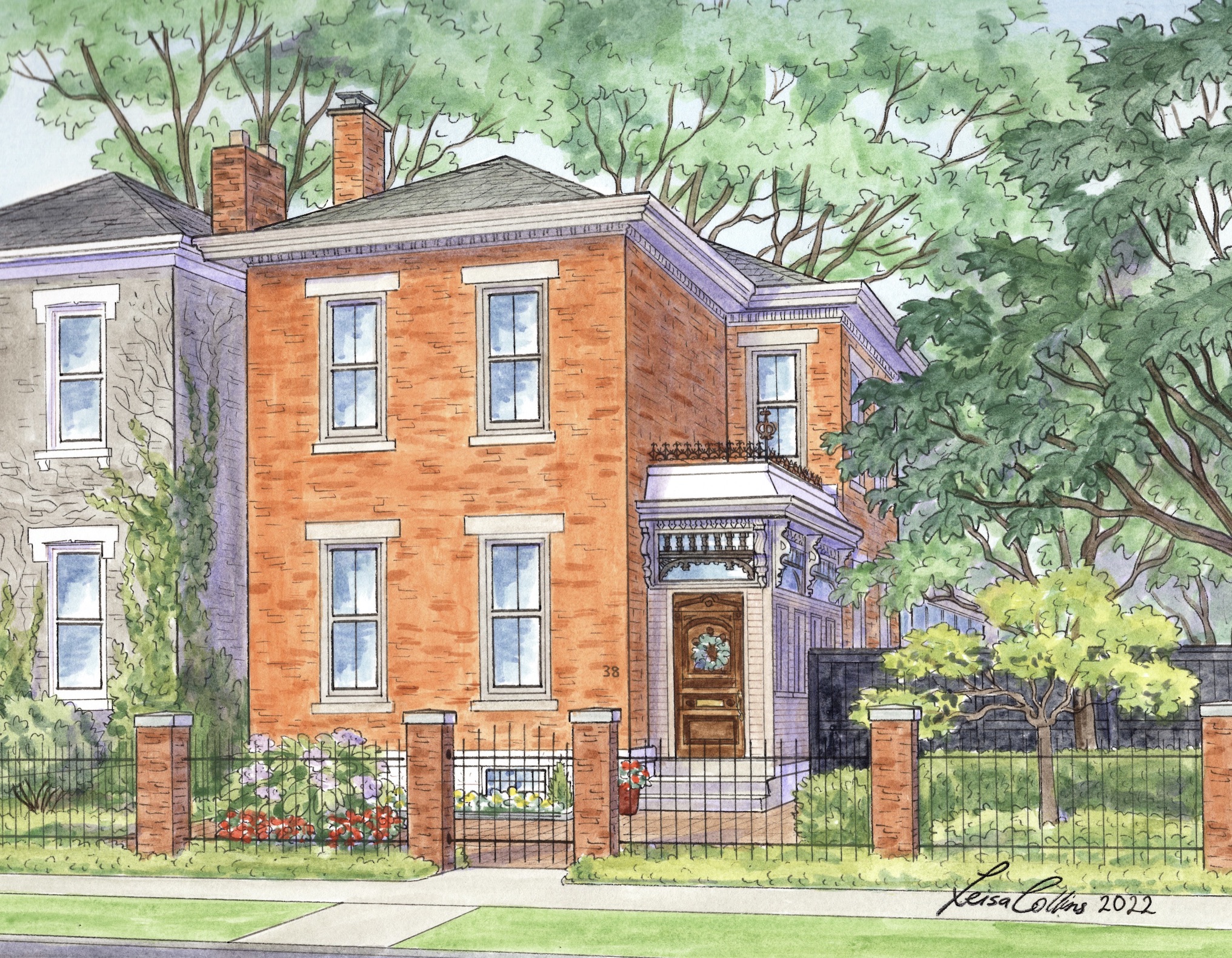
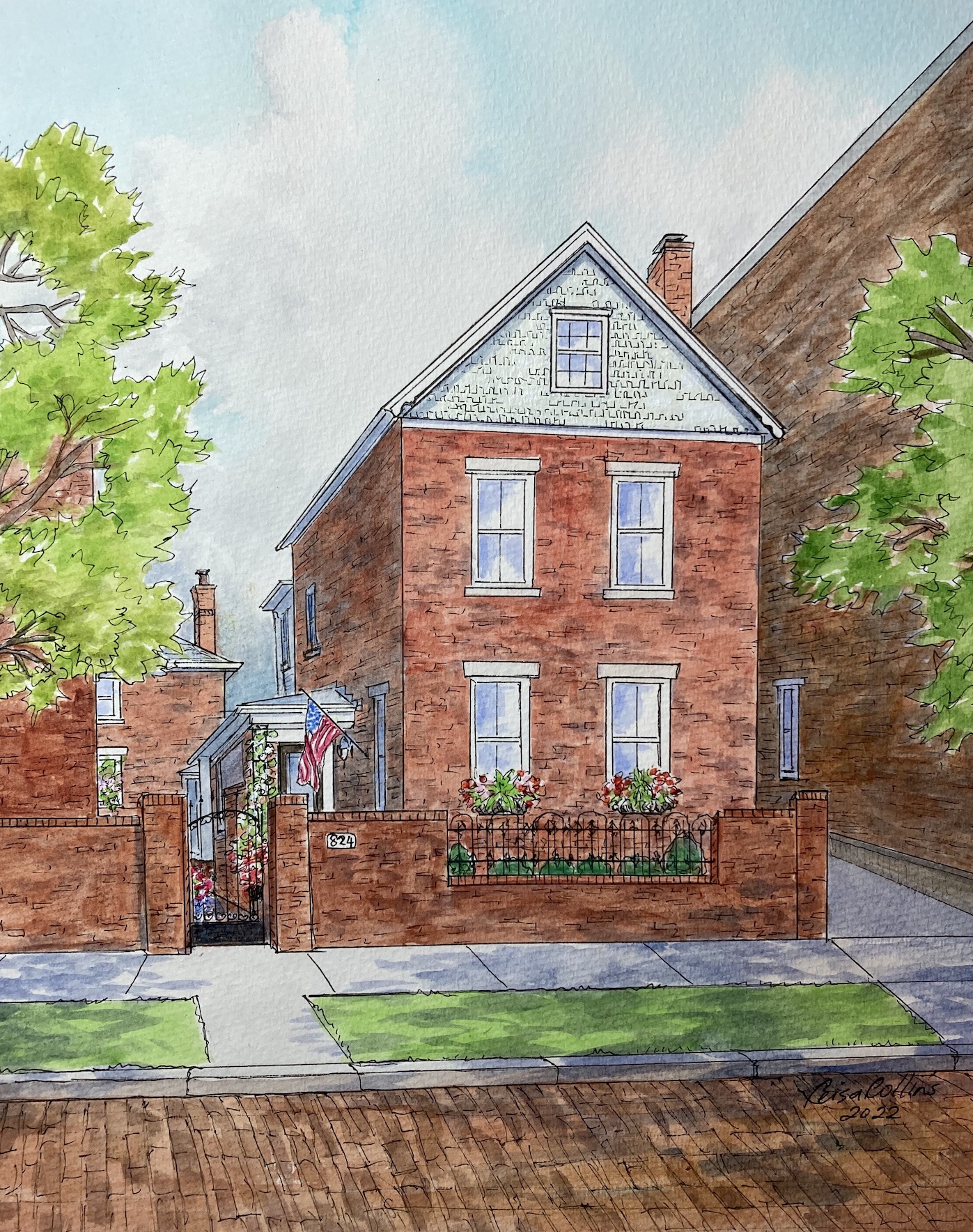
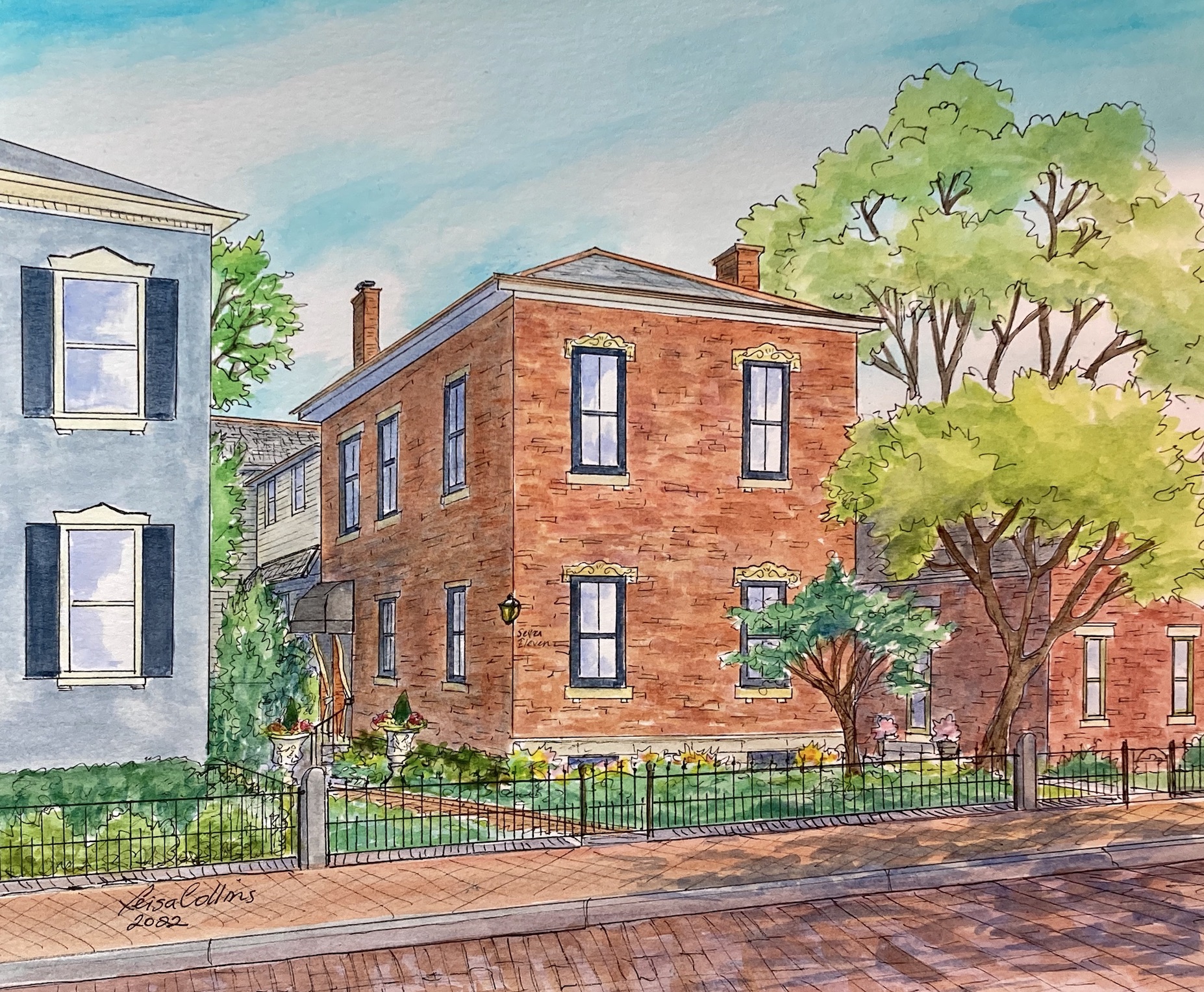
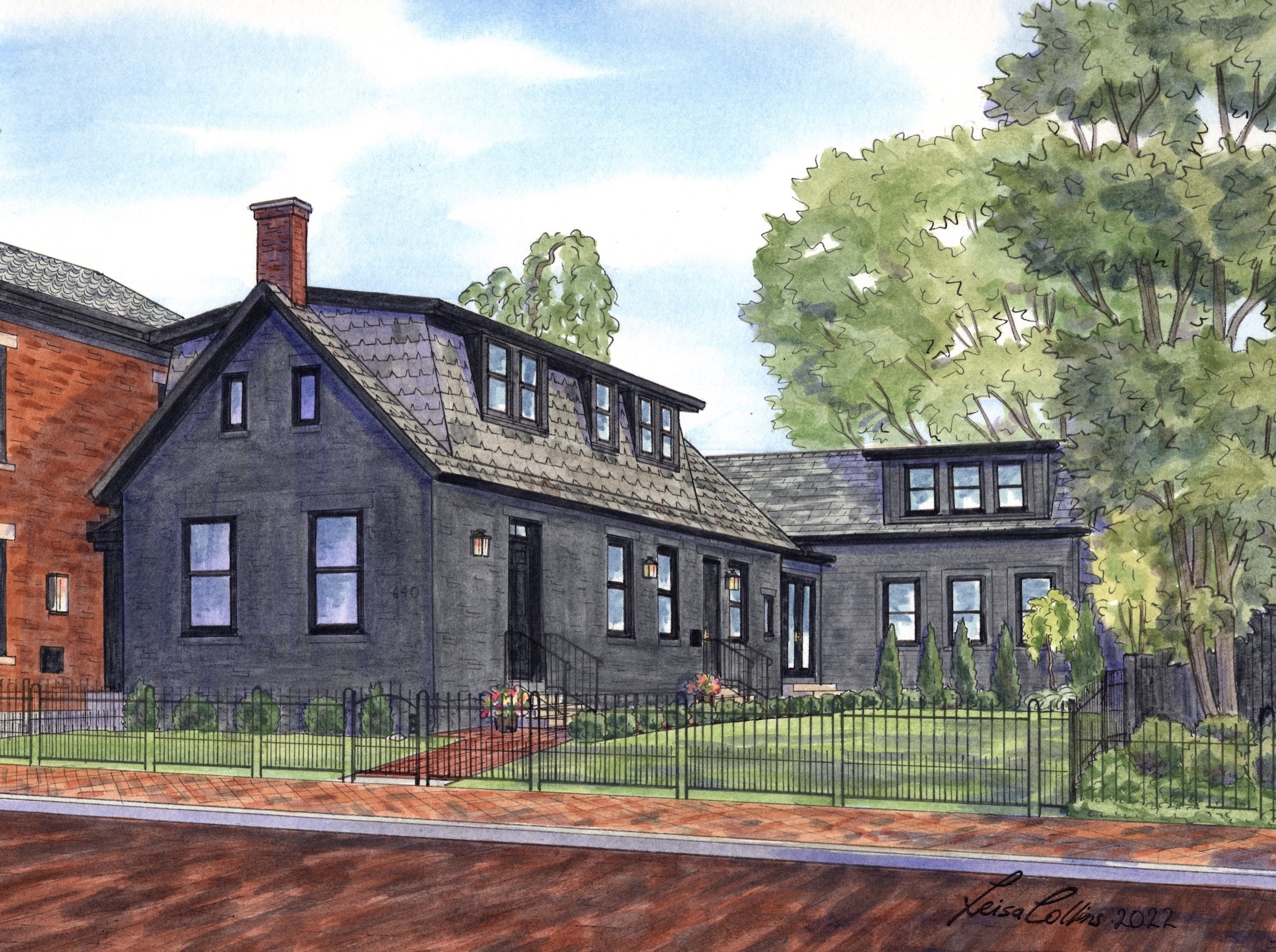
Some German Village History
In 1960, German Village became a city historic district and in 1974, it was added to the National Register of Historic Places, becoming the list’s largest privately funded preservation district. In 2007 the White House proclaimed it as a Preserve America Community. It’s boundaries increased in 1980 and today it is one of the world’s premier historic restorations.
Large scale German German immigration to the settlement of Columbus began in 1830. By 1865, one-third of Columbus’s population was German and the community was growing rapidly. They formed the neighborhood, starting businesses, schools and churches, such as the Ohio-historic St. Mary’s Catholic Church. Built in 1865, it’s towering 197-foot steeple was a center point of the city.
By the first half of the 20th century, the area was in serious decline, partly due to anti-German sentiment during WWI. The teaching of German in public schools was banned during this time and German textbooks were burned. Even German street names were changed.
German Village Declared a Slum
When local breweries closed during the Prohibition, the area saw further decline. The south end of the Village was zoned for manufacturing after the war, taking away the area’s residential feel. In World War II, the streetcar tracks and wrought-iron fences were confiscated for the war effort. By the 1950s, the area had become a slum and the city decided to demolish one-third of the neighborhood.
In stepped a man called Frank Fetch, who decided to go against the grain and purchased a house on S. Wall Street. Determined to rebuild the neighborhood, Fetch formed the German Village Society and by June 1960, the society hosted the first Haus und Garten Tour which featured eight restored homes and two gardens. Curious residents gathered and the media covered the event. Today, the tour is one of the city’s most popular events and the Frank Fetch Park in German Village was created in honor of him.
Historic Preservation
By lobbying for a local historic commission, concerned citizens managed to save German Village’s historic architecture from demolition in the 1960s. The German Village Commission had power over external changes made to buildings and they played a major role in getting the area listed on the National Register of Historic Places. Today, the German Village Society has a body of preservationists who maintain the historic quality of the buildings and neighborhood, ad the area is now considered one of the most desirable places to live in the city. Since 1960, more than 1,600 buildings have been restored and by the 1980s, most of restoration had been completed.
Today German Village is popular residential neighborhood, known for it sturdy, red-brick homes along tree-lined, brick-paved streets, and wrought iron fences. Columbus locals and tourist flock to the area all year round.
The famous annual Oktoberfest festival that is now celebrated in Columbus originated in German Village and a smaller version of the festival is also held there. German Village’s Schlee Brewmaster’s House and outdoor garden is a popular and lively location for the festivities. I’d love to take part in this event some time. It’s on my list. So if you’re a local and you happen to see us walking around with a beer next October, be sure to say hello!
Cheers!
Leisa


